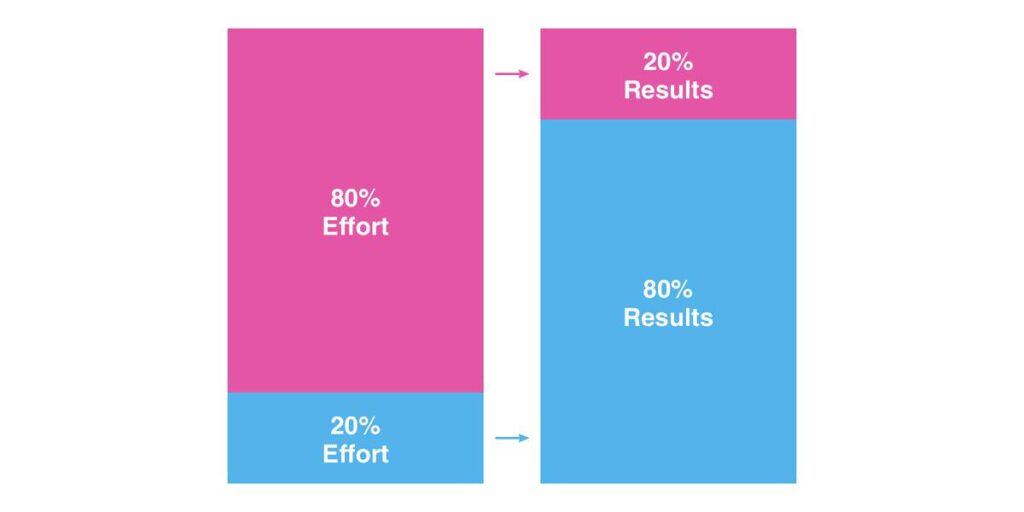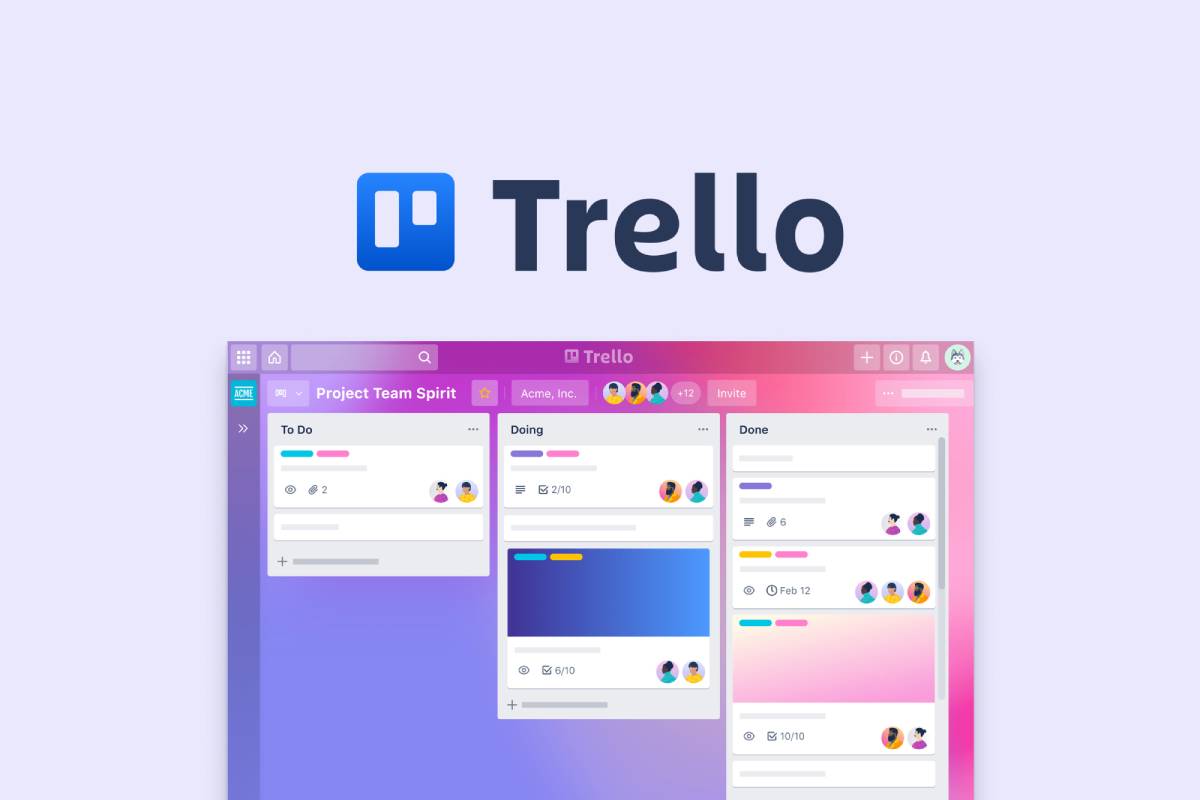The Personal Development Blog

The 80/20 Rule for App Usage
You’ve got over 100 apps on your phone — but how many do you actually use? More importantly, how many actually make your life better?
If you’ve ever opened your phone for one task and ended up down a rabbit hole of distractions, you’re not alone. Most of us are juggling dozens of apps daily, yet only a handful are truly useful. That’s where the 80/20 rule comes in — also known as the Pareto Principle — and it’s a powerful tool to help you reclaim your digital life.
In this article, we’ll explore how the 80/20 principle applies to your app usage, why it matters more than ever in our tech-saturated world, and how you can identify and focus on your high-impact apps to streamline your digital habits. Let’s make your tech work for you, not against you.
What Is the 80/20 Rule?
A Brief Primer on the Pareto Principle
The 80/20 rule, named after Italian economist Vilfredo Pareto, suggests that 80% of results come from 20% of efforts. Originally applied to economics, it’s since been used across productivity, business, and — more recently — technology use.
Applied to your digital life, it means this: Roughly 20% of your apps account for 80% of your valuable outcomes — things like getting work done, staying connected with family, or learning something new.
The rest? They’re probably digital clutter.
Why It Matters in a Digital World
Your phone isn’t just a tool anymore — it’s your office, your calendar, your social space, your entertainment hub, and your distraction engine.
Knowing which apps actually matter can help you:
- Reduce stress and overwhelm
- Save time and mental energy
- Regain control over your attention
- Create space for meaningful offline experiences
How to Identify Your High-Impact Apps
Track, Don’t Guess
Most people assume they know their app habits, but perception is often far from reality.
Use your phone’s built-in usage tracking — Screen Time (iOS) or Digital Wellbeing (Android) — to find out:
- Which apps you use most frequently
- How much time you spend on each
- What time of day you tend to use them
Look for patterns. Are the most-used apps actually helping you achieve your goals?
For example, you might be shocked to find that Instagram clocks more time than your email or note-taking app, even though it contributes little to your daily progress.
Separate Purposeful Use from Passive Use
An app isn’t “high-impact” just because you open it a lot. It’s about value.
Ask yourself:
- Does this app help me move towards a goal?
- Is it essential for work, learning, or a meaningful connection?
- Do I feel better or worse after using it?
Apps like your calendar, journaling tool, or meditation app may only take up 5% of your screen time — but contribute significantly to your wellbeing.
Compare that with passive apps that pull you in but leave you drained.
Reducing the Noise: Let Go of the 80%
The Digital Pareto Clean-Up
Once you’ve identified your top 20%, it’s time to deal with the rest.
This doesn’t necessarily mean deleting every other app.
Instead, you can:
- Hide or offload unused or low-impact apps
- Log out of apps you want to check less frequently
- Disable notifications that aren’t truly urgent
- Group distracting apps in folders far from your home screen
The goal is to reduce friction for intentional use and increase friction for impulsive habits.
If you’re unsure where to begin, our guide on how to delete 100+ apps without regret walks you through it step by step.
Give Each App a “Job”
Treat your apps like employees — each should have a clear role.
For example:

- Trello = Task manager
- Spotify = Mood booster during commutes
- WhatsApp = Family connection
If an app doesn’t have a defined purpose — or worse, has a negative impact — consider letting it go.
Reaping the Benefits of Focused App Use
Time Savings Add Up
Even saving 15 minutes a day by cutting out low-value apps adds up to over 90 hours a year — time you could spend reading, exercising, or just enjoying a screen-free moment.
Mental Clarity Improves
Decluttering your phone also declutters your mind.
With fewer distractions vying for your attention, you’ll find it easier to:
- Focus on what matters
- Make faster decisions
- Experience less digital fatigue
A clean digital environment fosters a cleaner mental space, and that clarity ripples into every part of your day.
You Start Using Tech with Intention
Once your app ecosystem is optimised, you’ll find yourself reaching for your phone on purpose, rather than out of habit.
This shift is transformative. It means:
- Replacing reaction with reflection
- Swapping mindless scrolling for mindful choices
- Using tech as a tool, not a trap
Common Myths About “Essential” Apps
“I Need This for Work”
Sometimes, what feels essential is just…familiar. For example, constantly checking Slack or Teams might feel productive, but are you actually working, or just monitoring?
Instead of defaulting to always-on communication, consider setting structured check-in times. This helps protect your deep work hours and reduces burnout.
In fact, creating healthy digital boundaries in the workplace can dramatically improve focus, as explored in our piece on avoiding app overload at work.
“It Helps Me Unwind”
Some people claim doomscrolling or endless swiping is their way of relaxing. But studies show that passive screen time often increases stress, anxiety, and poor sleep.
True rest comes from intentional, nourishing downtime. Think: listening to music, walking, reading — or even tech-free stillness.
Tailor Your 80/20 Rule to Life’s Seasons
What Works Now Might Not Work Later
Your high-impact apps will change depending on your goals and lifestyle. During a job hunt, LinkedIn might be top-tier. During a creative project, it might be Notion or Canva.
Review your digital priorities every few months.
Ask:
- Have my goals shifted?
- Are my top-used apps still high-value?
- Is any app creeping into the 80% without me noticing?
Stay flexible and honest. The 80/20 rule isn’t fixed — it’s fluid.
Watch for App Creep
Ever downloaded an app “just to try it out” and suddenly found yourself using it daily, without really meaning to?
That’s app creep, and it often happens without us realising.
Stay vigilant. Regularly review new additions and ask whether they truly belong in your digital life.
What a Healthy 80/20 App Balance Looks Like
There’s no universal “best apps” list.
But in a digitally mindful life, your 20% might include:

- Talk to your family or close friends
- A calendar or task app to organise your week
- One or two platforms for learning or creativity
- A wellbeing-focused app like meditation, journaling, or reading
And the rest? Minimise, mute, or remove them as needed.
You’re aiming for a tech ecosystem that feels:
- Simple
- Purposeful
- Uplifting
- Quiet when you want it to be
That’s the true power of the digital Pareto principle.
Final Thoughts: Use Your Energy Where It Counts
Here’s the thing — your time and attention are finite. Every tap, swipe, or scroll is a tiny vote for the kind of digital life you want to lead.
By applying the 80/20 rule to your app usage, you get intentional. You prioritise impact over impulse. You focus your energy where it counts.
So today, take a moment to ask: Which apps actually serve me? Then clear out the ones that don’t.
Because less time wasted on low-value tech means more time for what really matters — in your work, relationships, and sense of self.
You don’t need more apps — you need more intention. Start with one action: identify your top five high-impact apps and build from there. Your future focus is just a few taps away.









